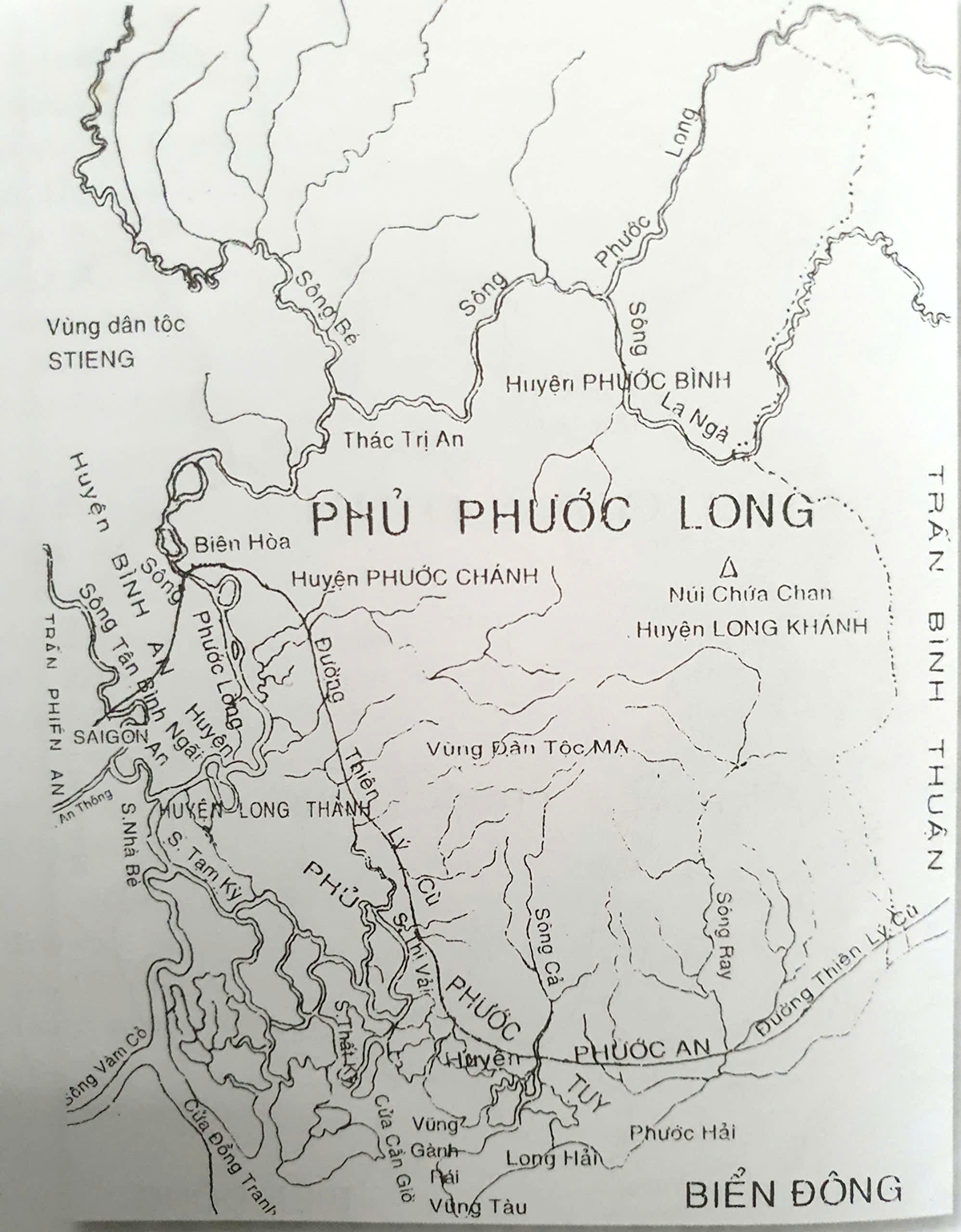 |
| Bien Hoa province under the Nguyen dynasty (1802-1945). |
In the general context of the South, when the Kinh people from the Dang Ngoai region came to live and the Chinese people came to settle down, until the time when Lord Nguyen established the administrative system at the end of the 17th century, this land officially had a name on the map of Dai Viet with the name of Dinh Tran Bien.
History of the establishment of the two provinces' administration
In 1698, Lord Nguyen Phuc Chu sent Commander Nguyen Huu Canh to inspect the Southern land. Arriving at Nong Nai land, Nguyen Huu Canh established Gia Dinh prefecture, and then established 2 districts: Tan Binh established Phien Tran palace (land west of Saigon river, including Tay Ninh, Ho Chi Minh City, Tien Giang... today); Phuoc Long established Tran Bien palace (land east of Saigon, including Binh Phuoc, Dong Nai, Binh Duong, Ba Ria - Vung Tau provinces and part of Binh Thuan province today). All of that land belonged to Dai Viet country and was applied with policies to encourage development in all aspects. By the mid-18th century, the entire Gia Dinh land was divided by Lord Nguyen into 3 palaces: Tran Bien - Phien Tran - Long Ho and Ha Tien town.
In 1808, King Gia Long of the Nguyen Dynasty reorganized the administration of the Southern region, Tran Bien Palace was changed to Bien Hoa Town. From 1832-1838, King Minh Mang reorganized the administrative units of the whole country, Bien Hoa Town was changed to Bien Hoa Province including Phuoc Long Prefecture, Phuoc Tuy Prefecture and 7 districts (Phuoc Chanh, Binh An, Long Thanh, Phuoc An, Long Khanh, Ngai An and Phuoc Binh). Phuoc Binh District was a newly established district on the basis of extracting 16 villages of Chanh My Ha Commune. A part of the northwest area of Phuoc Binh District later belonged to Binh Phuoc Province.
Under the French colonial occupation, Bien Hoa province was initially divided into 5 administrative offices/districts, but by 1876, Bien Hoa province had 3 remaining districts: Bien Hoa (land of Phuoc Chanh district and Long Thanh district before), Ba Ria (land of Phuoc Tuy prefecture, Phuoc An district and Long Khanh district before) and Thu Dau Mot (land of Phuoc Long prefecture, Binh An district before).
Route DT753 is 29.4km long. After investment, it will connect with routes DT761 and DT767 in Dong Nai province and is the shortest route from Binh Phuoc province to Long Thanh International Airport and Cai Mep - Thi Vai port.
Bien Hoa District has 16 cantons, including the cantons previously belonging to Phuoc Binh District which were dissolved and the cantons of ethnic minorities which are administrative units corresponding to the area of Binh Phuoc Province later. Thu Dau Mot District has 12 cantons, of which 6 cantons of ethnic minorities are now in Binh Phuoc Province.
After the August Revolution (1945), there were no major changes in administrative boundaries. The northern districts of Thu Dau Mot province, including Hon Quan, Ba Ra, Bu Dop, and Phu Rieng, were the land of Binh Phuoc today. In May 1951, the revolutionary government merged the two provinces of Bien Hoa and Thu Dau Mot into Thu Bien province under the Eastern Inter-Zone, including 9 districts: Hon Quan, Lai Thieu, Ben Cat, Thu Duc, Tan Uyen, Chau Thanh, Song Be, Vinh Cuu, Xuan Loc, and Bien Hoa town and Thu Dau Mot town. In July 1961, the revolutionary government separated Thu Bien province into Bien Hoa province, Thu Dau Mot province, and Phuoc Thanh province.
Bien Hoa - Dong Nai area, from 1973-1975, included Bien Hoa rural province, Bien Hoa town, Ba Ria - Long Khanh province and Tan Phu province. In January 1976, the Provisional Revolutionary Government of the Republic of South Vietnam established Dong Nai province on the basis of merging the provinces: Bien Hoa, Ba Ria - Long Khanh, Tan Phu. Dong Nai province has Bien Hoa city, Vung Tau town, Vinh Cuu, Thong Nhat, Tan Phu, Xuan Loc, Long Thanh, Chau Thanh, Long Dat, Xuan Moc, Duyen Hai districts, Truong Sa archipelago. Since then, Dong Nai province has undergone many times of separation and merger of some areas with other provinces, the province currently has 11 administrative units at district/city level.
Binh Phuoc area, on January 30, 1971, the Central Office for Southern Vietnam decided to establish Binh Phuoc Sub-region and at the end of 1972, it dissolved to establish Binh Phuoc province. On July 2, 1976, the National Assembly of the Socialist Republic of Vietnam decided to establish Song Be province including Thu Dau Mot, Binh Phuoc and 3 communes of Thu Duc district. On January 1, 1997, Binh Phuoc province was re-established including 5 districts in the North of Song Be province: Dong Phu, Binh Long, Loc Ninh, Phuoc Long and Bu Dang.
Since then, Binh Phuoc province has undergone many times of separation and merger of some localities. Binh Phuoc currently has 11 administrative units, including Dong Xoai city, Phuoc Long town, Binh Long town, Chon Thanh town and the districts of Dong Phu, Hon Quan, Bu Gia Map, Bu Dang, Bu Dop, Loc Ninh and Phu Rieng.
Prioritize the development of key industries in a modern direction
Dong Nai has a particularly important position when it borders Ho Chi Minh City and Binh Duong to the West, Binh Thuan to the East, Ba Ria - Vung Tau to the South, Lam Dong and Binh Phuoc to the North. Dong Nai is the gateway connecting the Southeast region with Vietnam's economic regions and internationally. In the direction of sustainable economic development, Dong Nai focuses on 3 main areas: industry, services and agriculture.
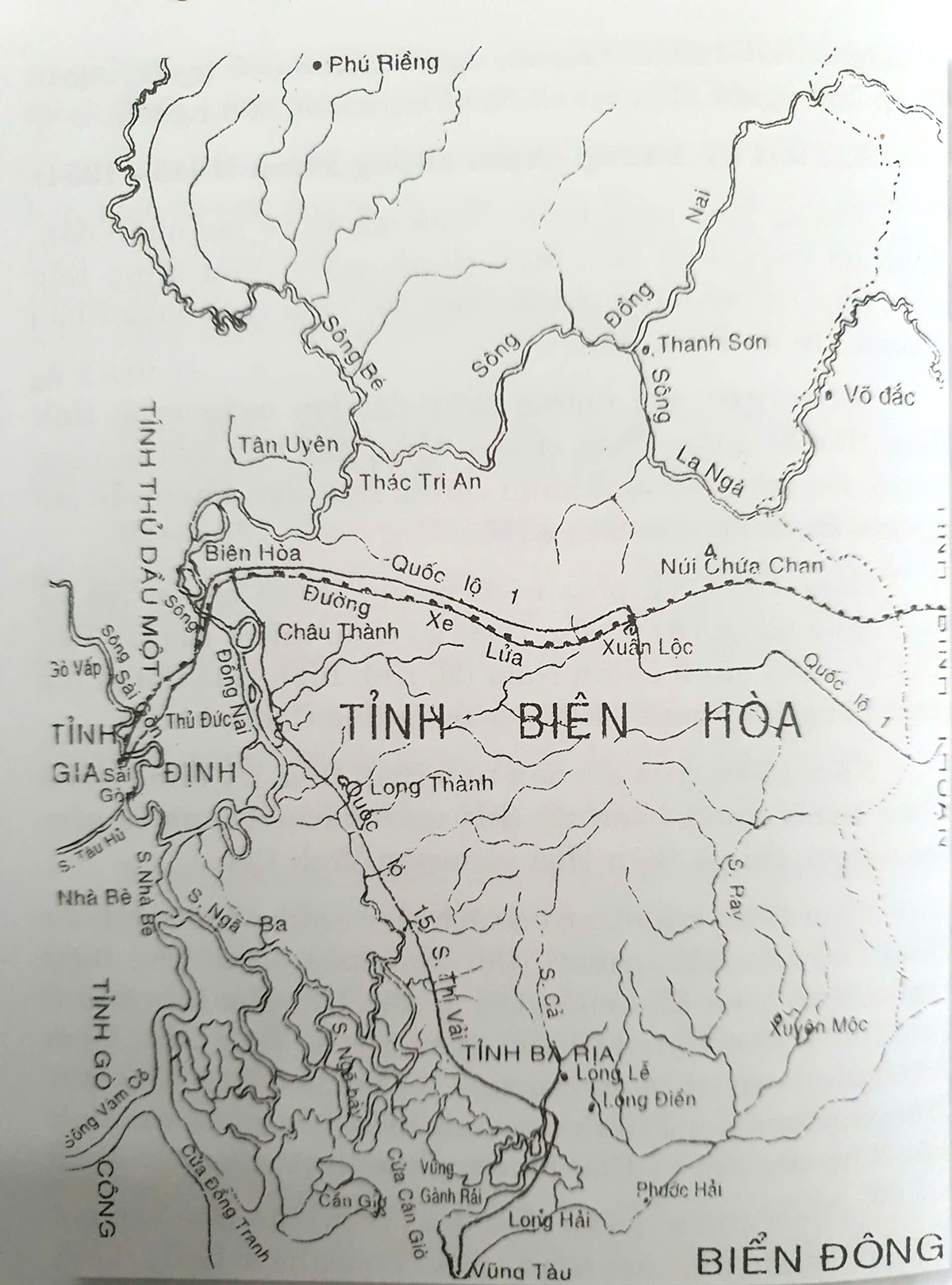 |
| Bien Hoa province under French rule (1862-1945). |
Along with that, the province focuses on investing heavily in transport infrastructure to promote regional connectivity and attract investment. In addition to the expressways Ho Chi Minh City - Long Thanh - Dau Giay, Dau Giay - Phan Thiet that have been put into use; the expressways Bien Hoa - Vung Tau, Ben Luc - Long Thanh, Dau Giay - Lien Khuong, Ring Road 3 - Ho Chi Minh City are under construction; will continue to invest in upgrading, expanding, and constructing the North - South expressways in the East, Ring Road 4 - Ho Chi Minh City, national highways... Investing in the construction of railways connecting the Bien Hoa - Vung Tau, Ho Chi Minh City - Nha Trang; Thu Thiem - Long Thanh International Airport.
Binh Phuoc is located in the North of the Southeast region, with a total natural area of 6,873.56 km 2 , the largest in the Southeast. Geographical location, the North borders Dak Nong, the South borders Binh Duong, the East borders Lam Dong and Dong Nai, the West borders Tay Ninh, the Northwest borders Cambodia. Strategic location in the new economic corridor, Binh Phuoc is the gateway for economic - cultural - social exchange between the Southeast, the Mekong Delta with the Central Highlands and internationally, especially with Cambodia and Thailand. Traffic has National Highway 14, National Highway 13, National Highway 14C, connecting important regions of the country. Thanks to the advantage of geographical location, convenient traffic infrastructure, especially the important Hoa Lu International Border Gate, which is a hub for trade, trade development, tourism and export, Binh Phuoc is becoming an attractive province in attracting investment and economic development in the Southeast.
Binh Phuoc focuses on development in three main areas: industry, agriculture and trade - services.
Recognizing the important role of infrastructure in attracting investment, Binh Phuoc has been implementing many key transport projects. In particular, the Ho Chi Minh City - Thu Dau Mot - Chon Thanh expressway and Gia Nghia - Chon Thanh expressway are being accelerated, contributing to rapid regional connectivity. Provincial roads DT741, DT751, DT752, DT754, DT755B play an important role as external routes connecting trade between Binh Phuoc and neighboring provinces and cities, while facilitating the formation of dry ports and logistics centers Hoa Lu - Chon Thanh - Dong Phu.
Xuan Nam
Source: https://baodongnai.com.vn/dong-nai-cuoi-tuan/202505/dong-nai-binh-phuoc-trong-dong-chay-lich-su-b4f209b/







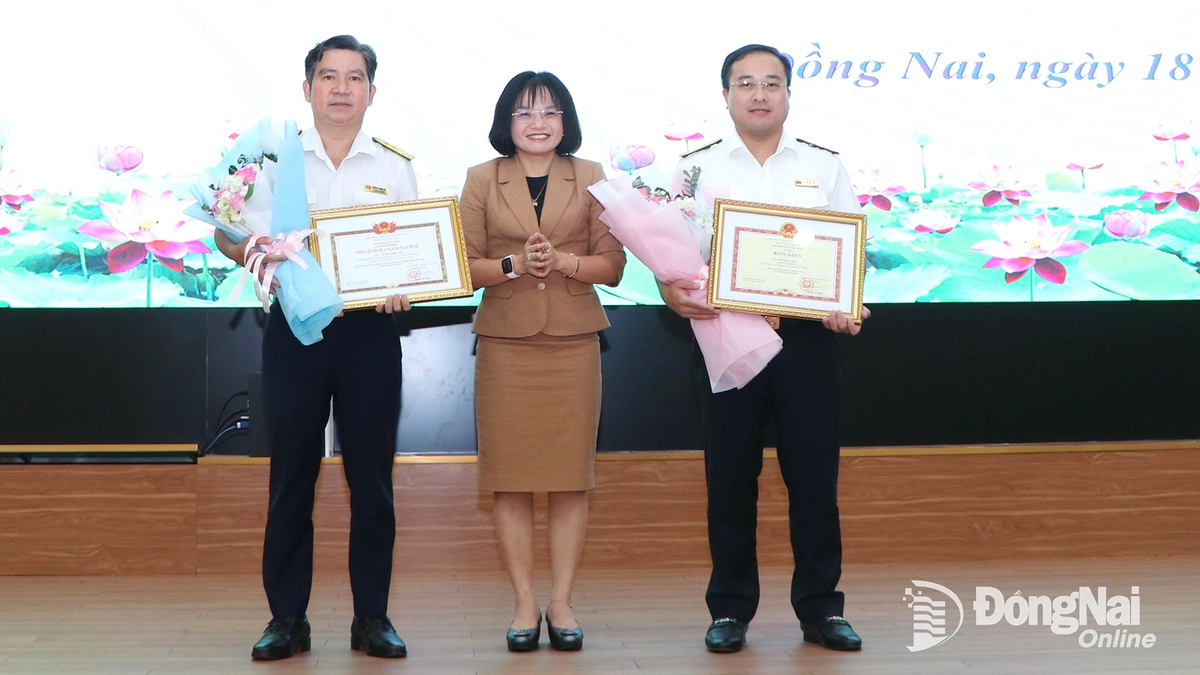
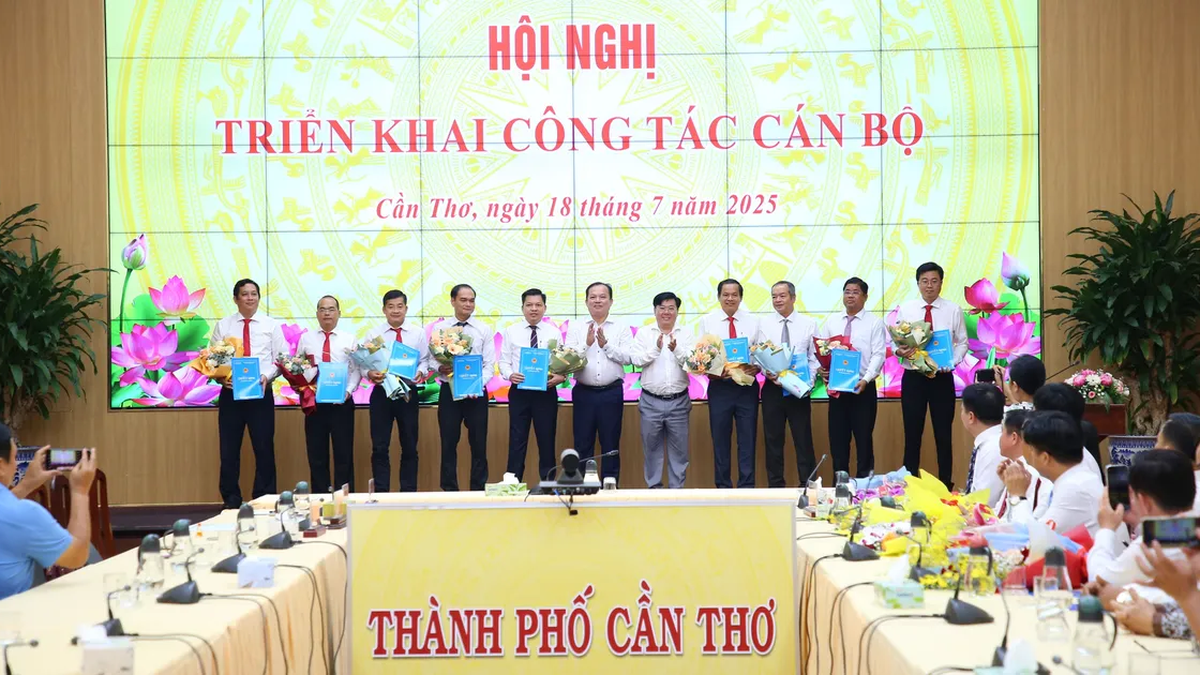

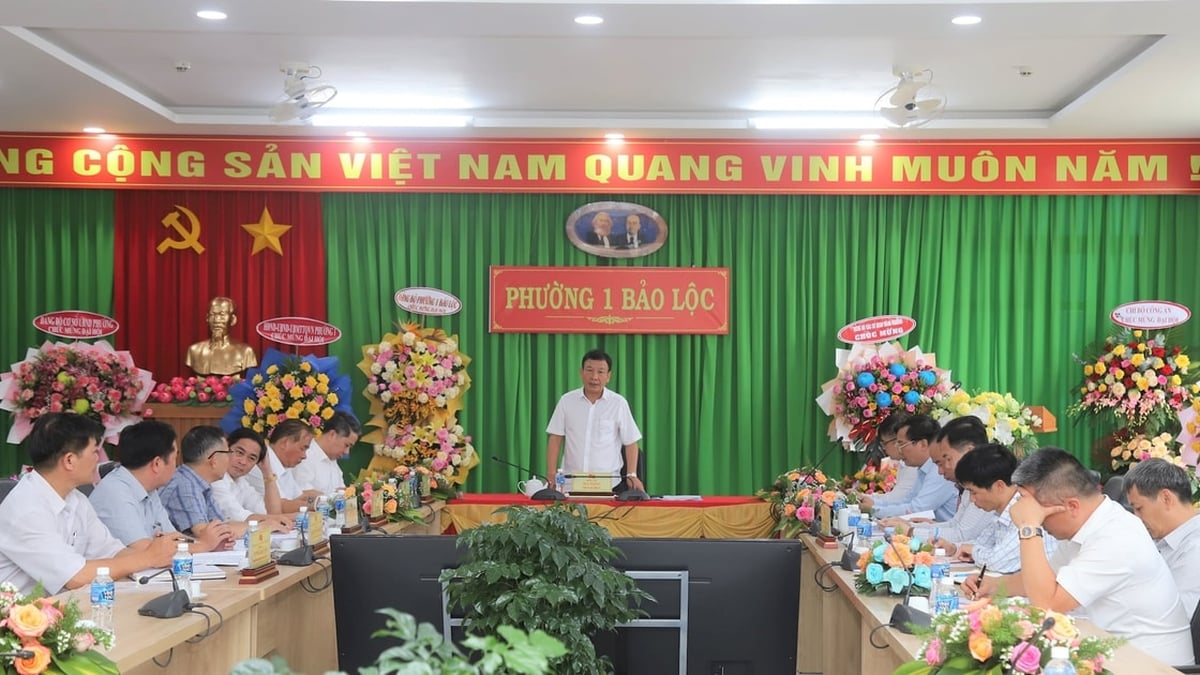

























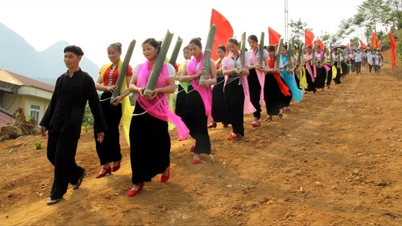




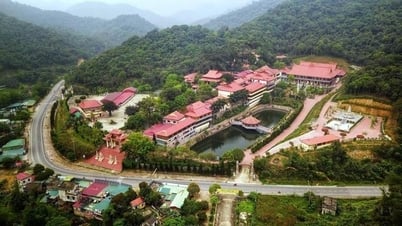

















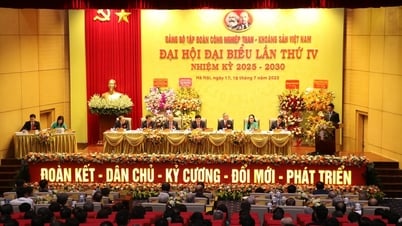


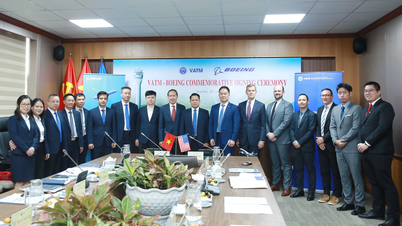



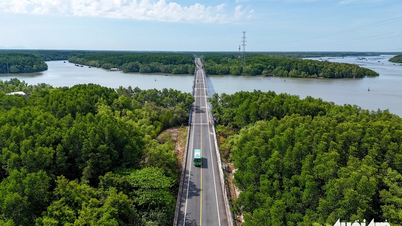










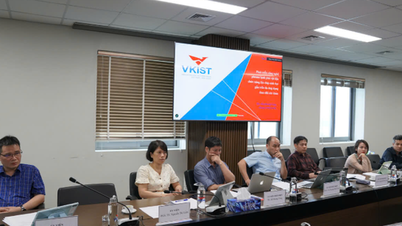














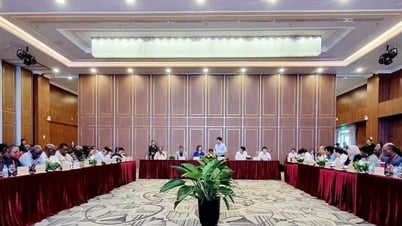

![[Infographic] In 2025, 47 products will achieve national OCOP](https://vphoto.vietnam.vn/thumb/402x226/vietnam/resource/IMAGE/2025/7/16/5d672398b0744db3ab920e05db8e5b7d)





Comment (0)